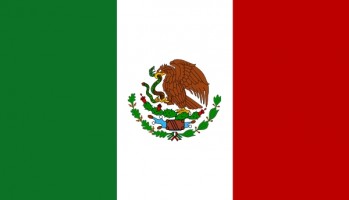Pre-European Mexico
Mexico had a rich cultural history before the arrival of the Europeans. Notably they had many independent indigenous groups including the Aztec, Maya, Mixtec and Tolmec among others. These civilizations flourished at various times and in various regions of this large country over a period of 10,000 years.
Conquest
In 1519 Hernán Cortes of Spain led a group of 500 men and horses into the vast city of Tenochtitlan, now known as Mexico City. It was one of the largest cities of the time and the capital of the vast Aztec Empire led by its ruler Moctezuma. How Cortes and his men were able to capture such a huge empire with such a small number of people is due in large part to luck. The Aztecs believed the Spaniards to be Gods due to their appearance. They wore strange clothes, created fire with muskets and were presumed to be part animal part human. (The Aztecs had never seen horses before). Secondly, the conquerors brought with them a secret weapon: smallpox. Largely immune themselves, this disease ravaged the local population killing millions within the first years of contact. Many Aztecs believed they were being punished and turned to the Christian God as a savior. Although it took many more decades to completely conquer the vast territory of Mexico, the fall of the Aztec Empire in 1521 is seen as the official beginning of Spanish rule over Mexico. The Spanish spent another 130 years consolidating their empire. The colonial period lasted from around 1650 until Mexican independence in 1821.
Legacy
The majority of Mexicans today are considered mestizo, a word which refers to the mixture of Spanish and indigenous blood. The Catholic faith continues to be the dominant faith within Mexico although it is different from Catholicism found in Europe. Mexicans have included numerous indigenous elements into their faith to reconcile the two. Nowadays, the term Montezuma’s revenge is used jokingly to refer to unpleasant symptoms of stomach discomfort or vomiting experienced by some tourists visiting Mexico!








